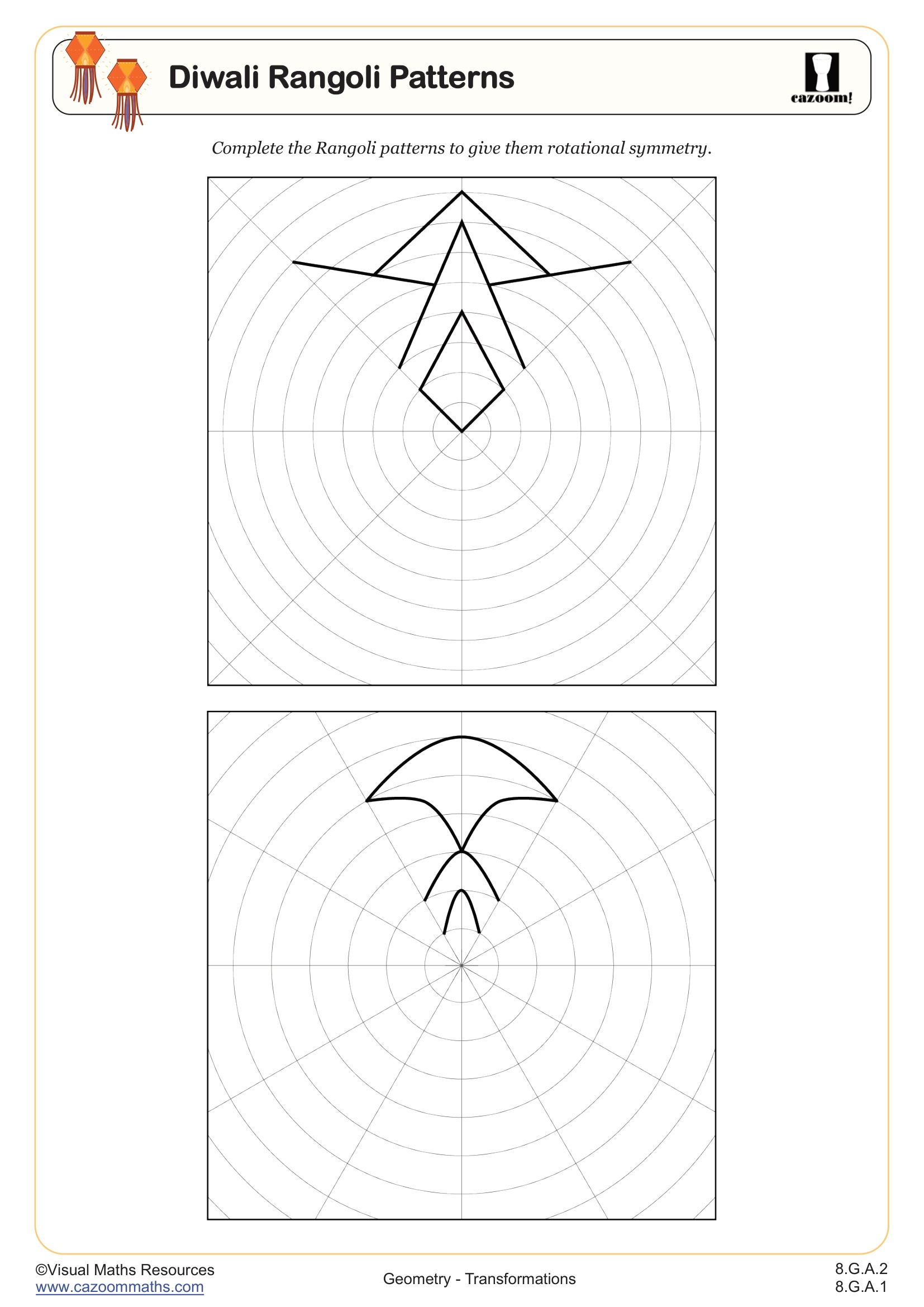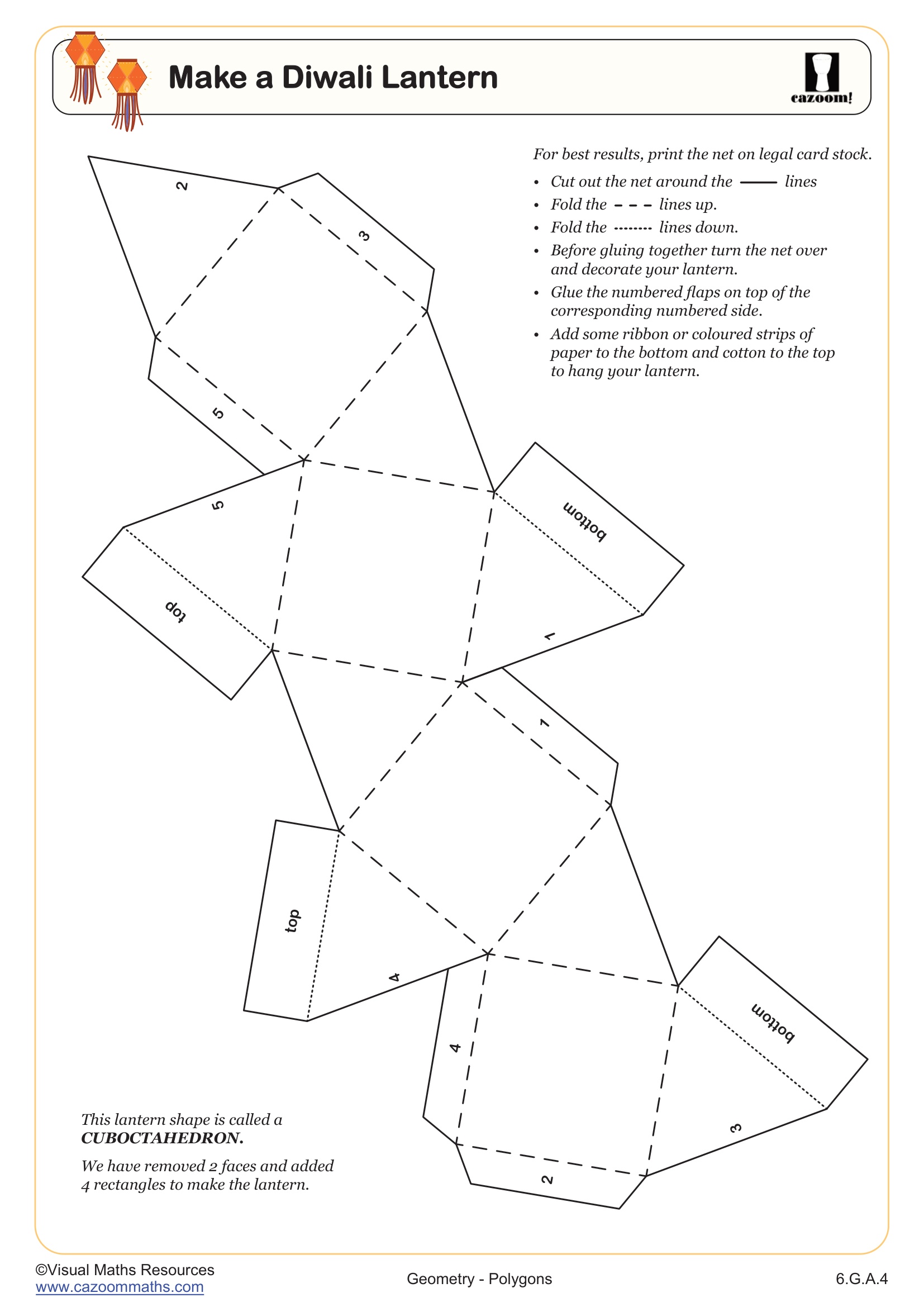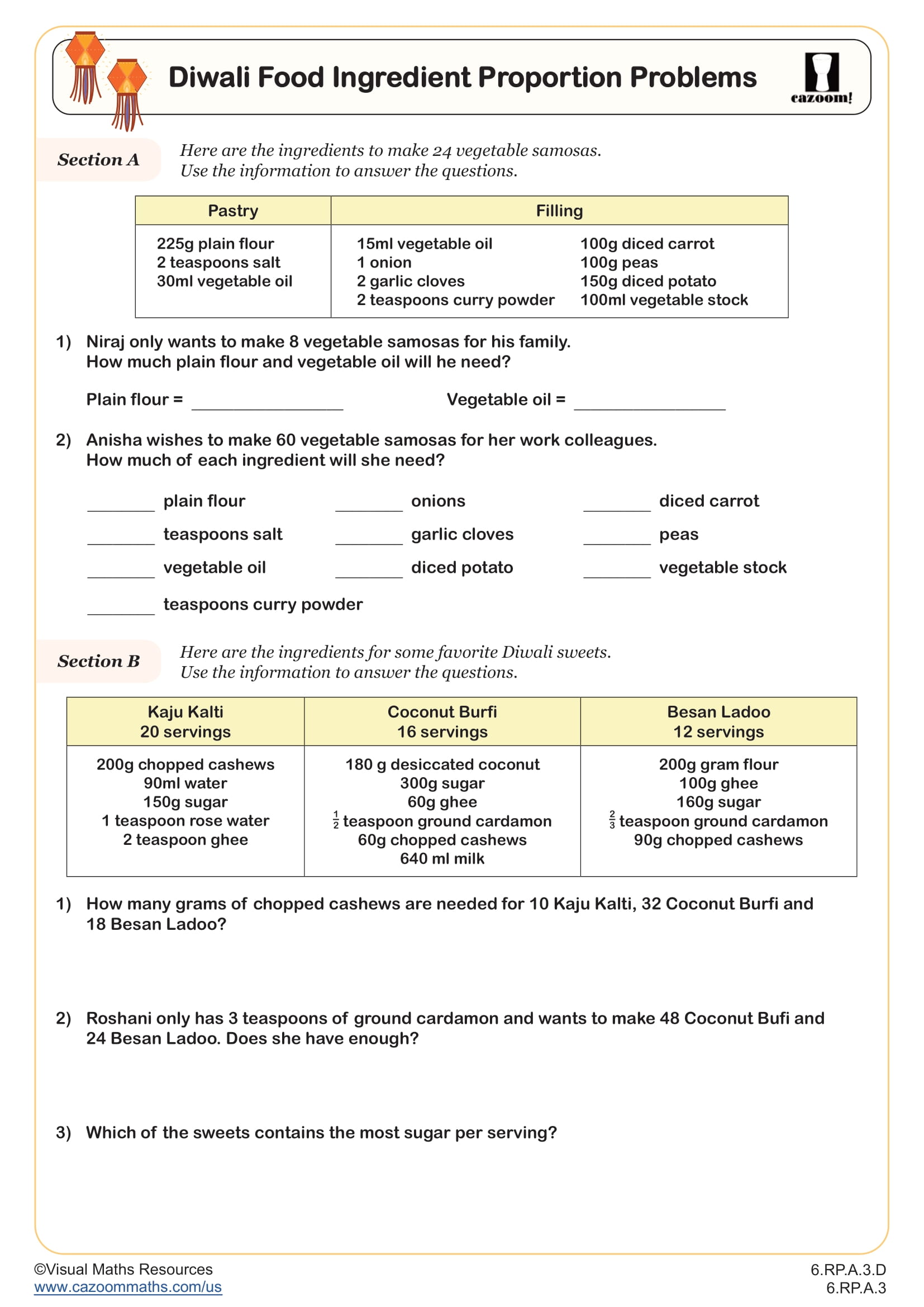Diwali Rangoli Patterns WORKSHEET
Suitable for Grades: 8th Grade, Geometry, IM 2
CCSS: 8.G.A.1, 8.G.A.2
CCSS Description: Verify experimentally the properties of rotations, reflections, and translations: a. Lines are taken to lines, and line segments to line segments of the same length. b. Angles are taken to angles of the same measure. c. Parallel lines are taken to parallel lines.
Understand that a two-dimensional figure is congruent to another if the second can be obtained from the first by a sequence of rotations, reflections, and translations; given two congruent figures, describe a sequence that exhibits the congruence between them.
Understand that a two-dimensional figure is congruent to another if the second can be obtained from the first by a sequence of rotations, reflections, and translations; given two congruent figures, describe a sequence that exhibits the congruence between them.
Diwali Rangoli Patterns WORKSHEET DESCRIPTION
Complete the rangoli patterns to form some interesting designs with rotational symmetry. Rangoli is an art form that originates from the Indian subcontinent, in which patterns are created on the floor or a tabletop using materials such as powdered limestone, red ochre, dry rice flour, colored sand, quartz powder, flower petals, and colored rocks. Throughout Diwali, Hindus draw bright Rangoli patterns on the floor, near the front door to encourage the goddess Lakshmi to go into their homes. The name even comes from 'rangavalli' which means color. There are some blank templates for learners to design their own patterns.


